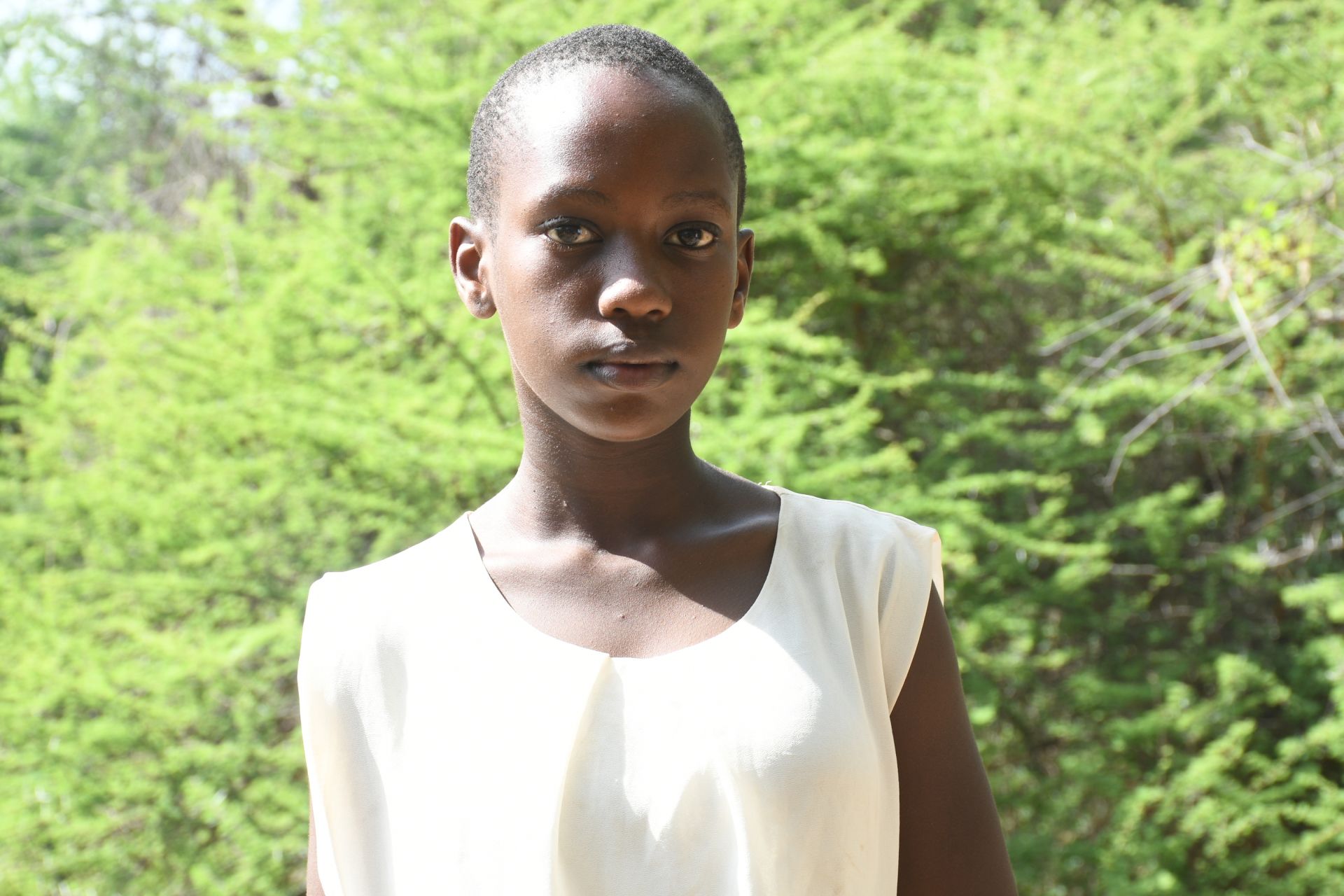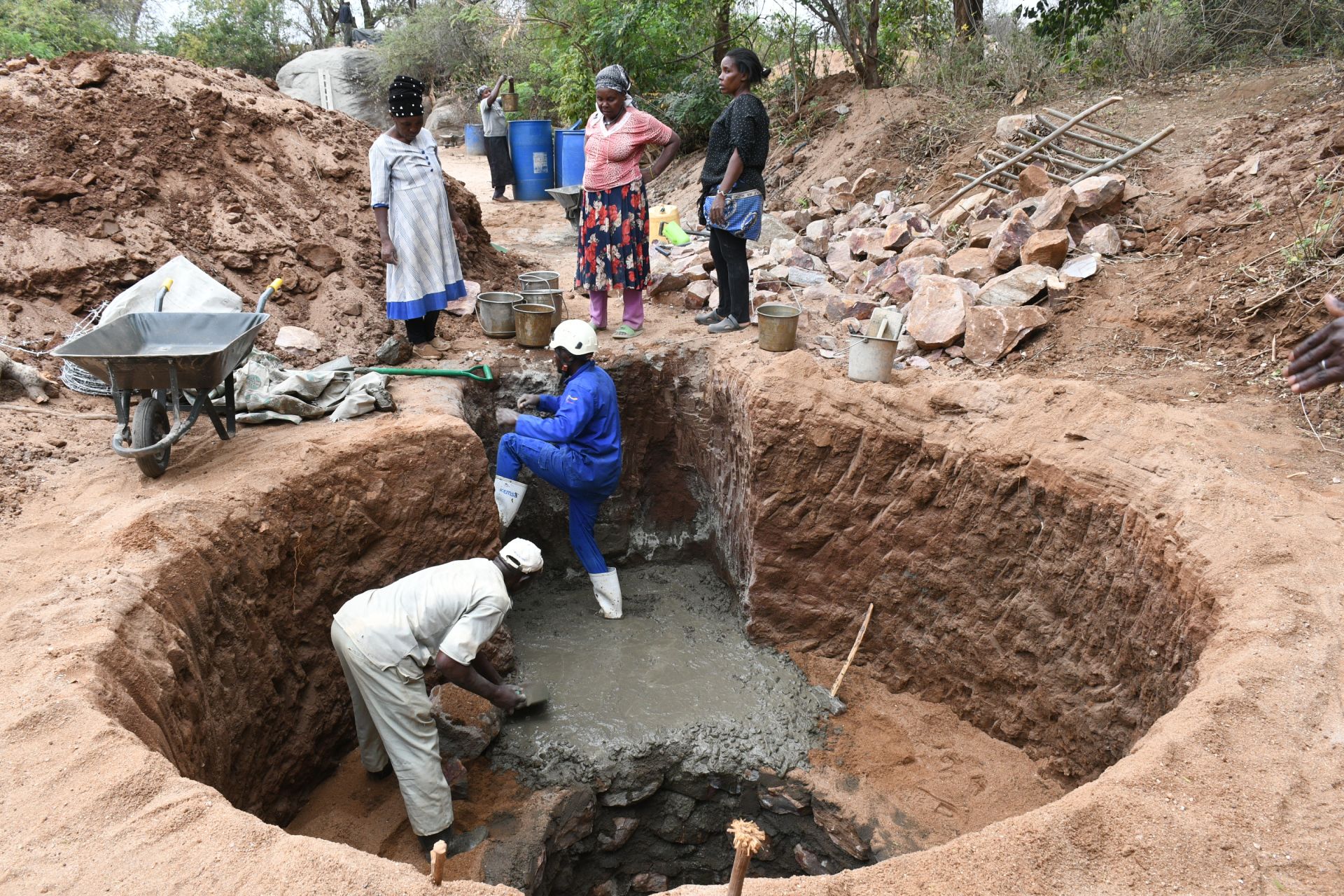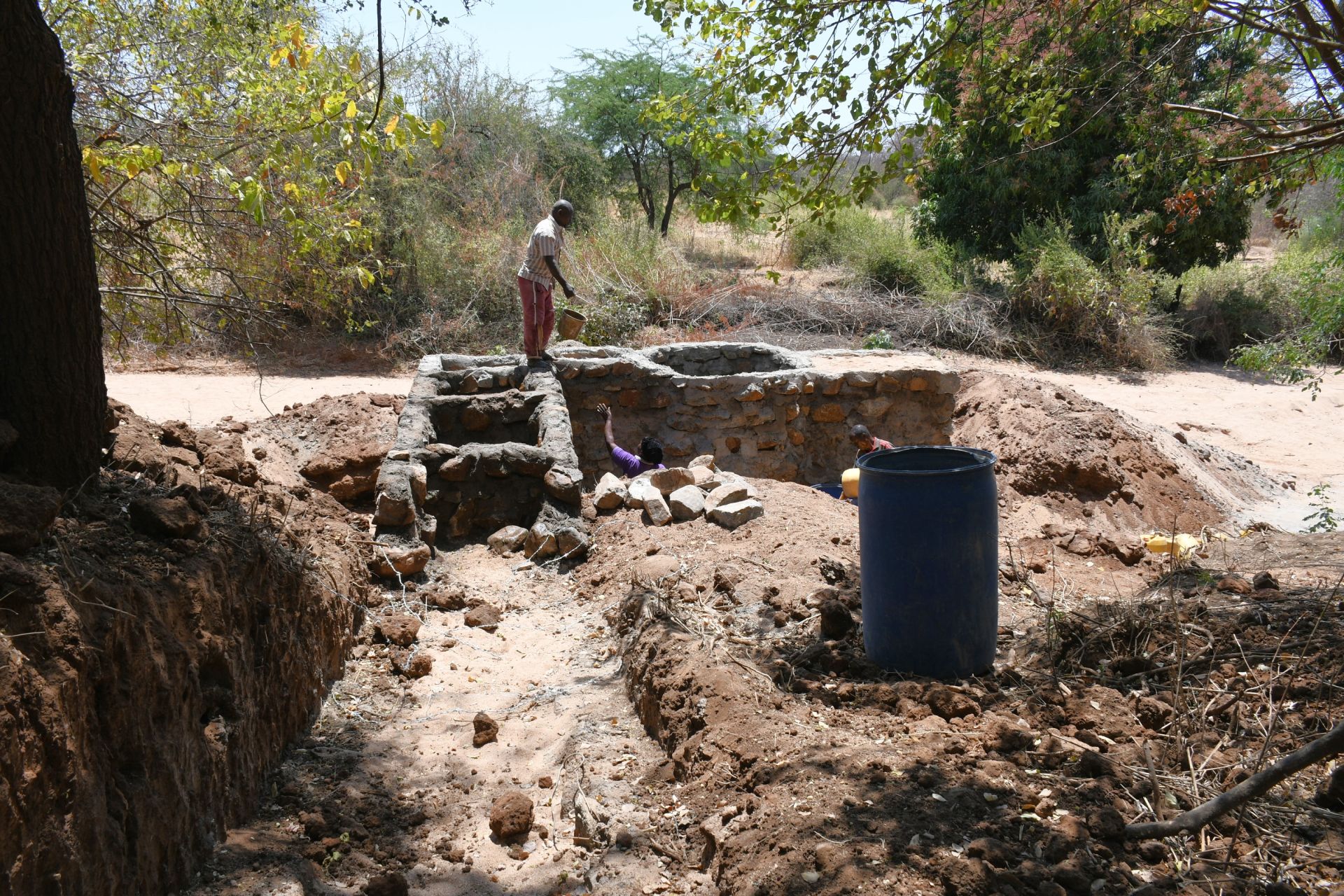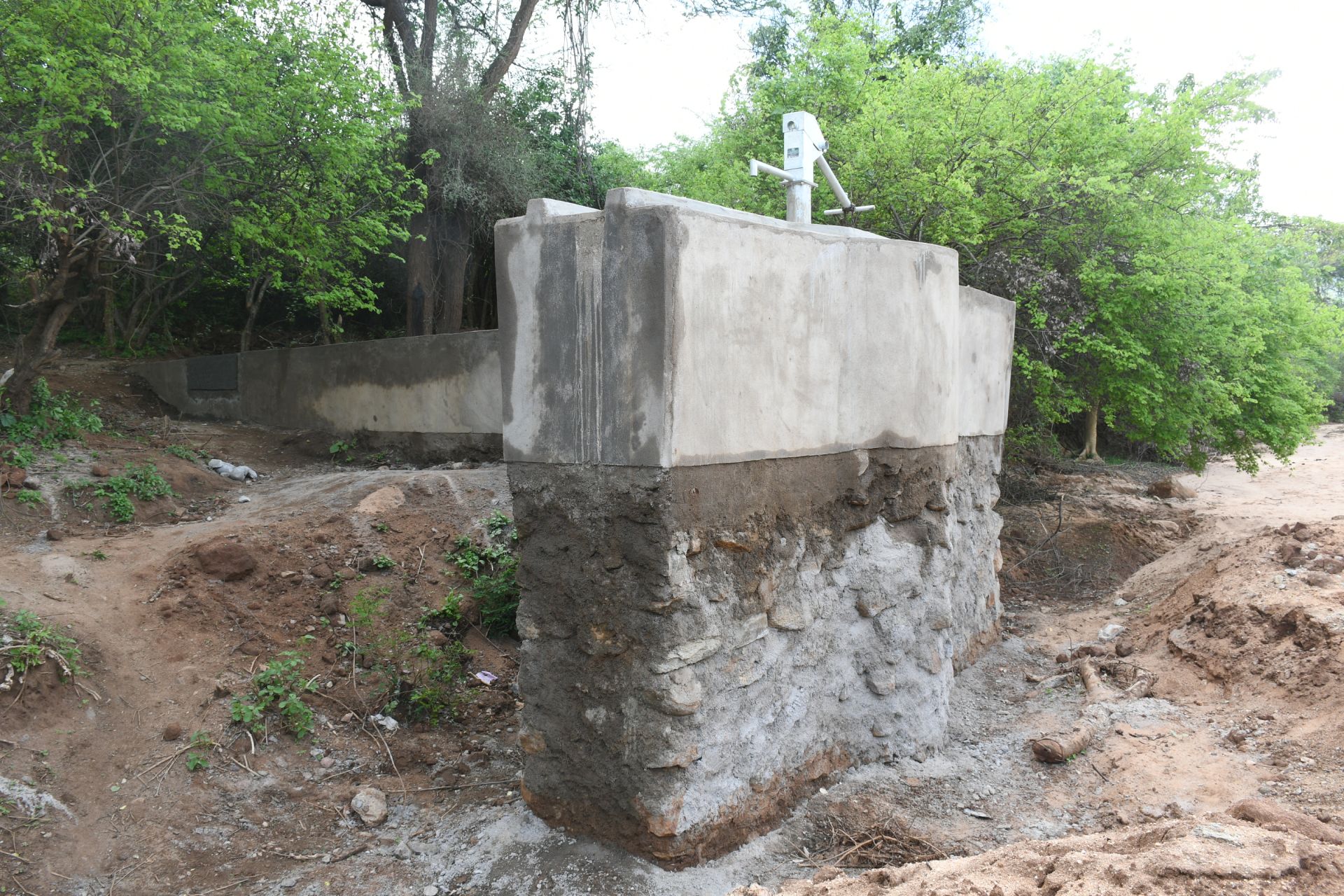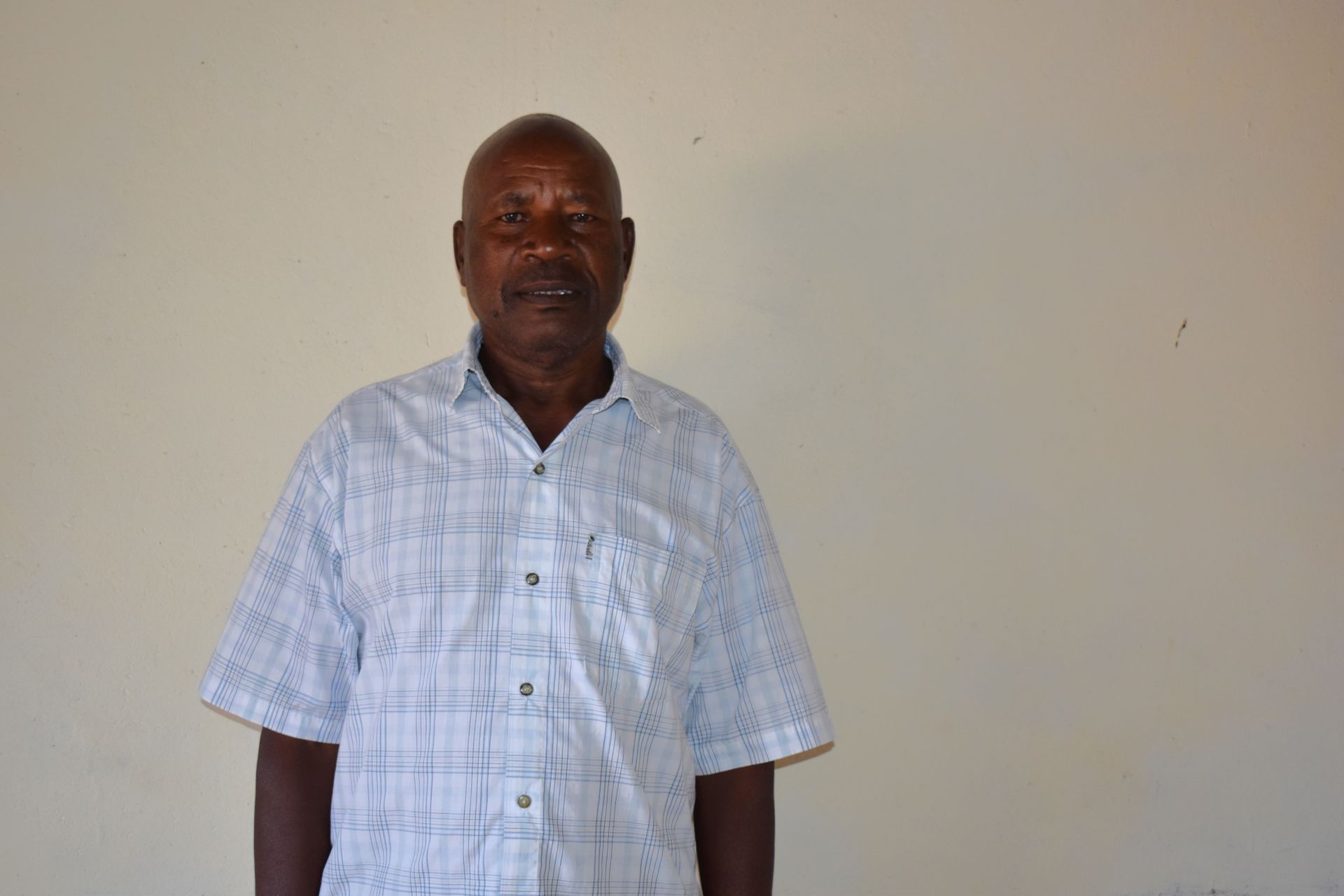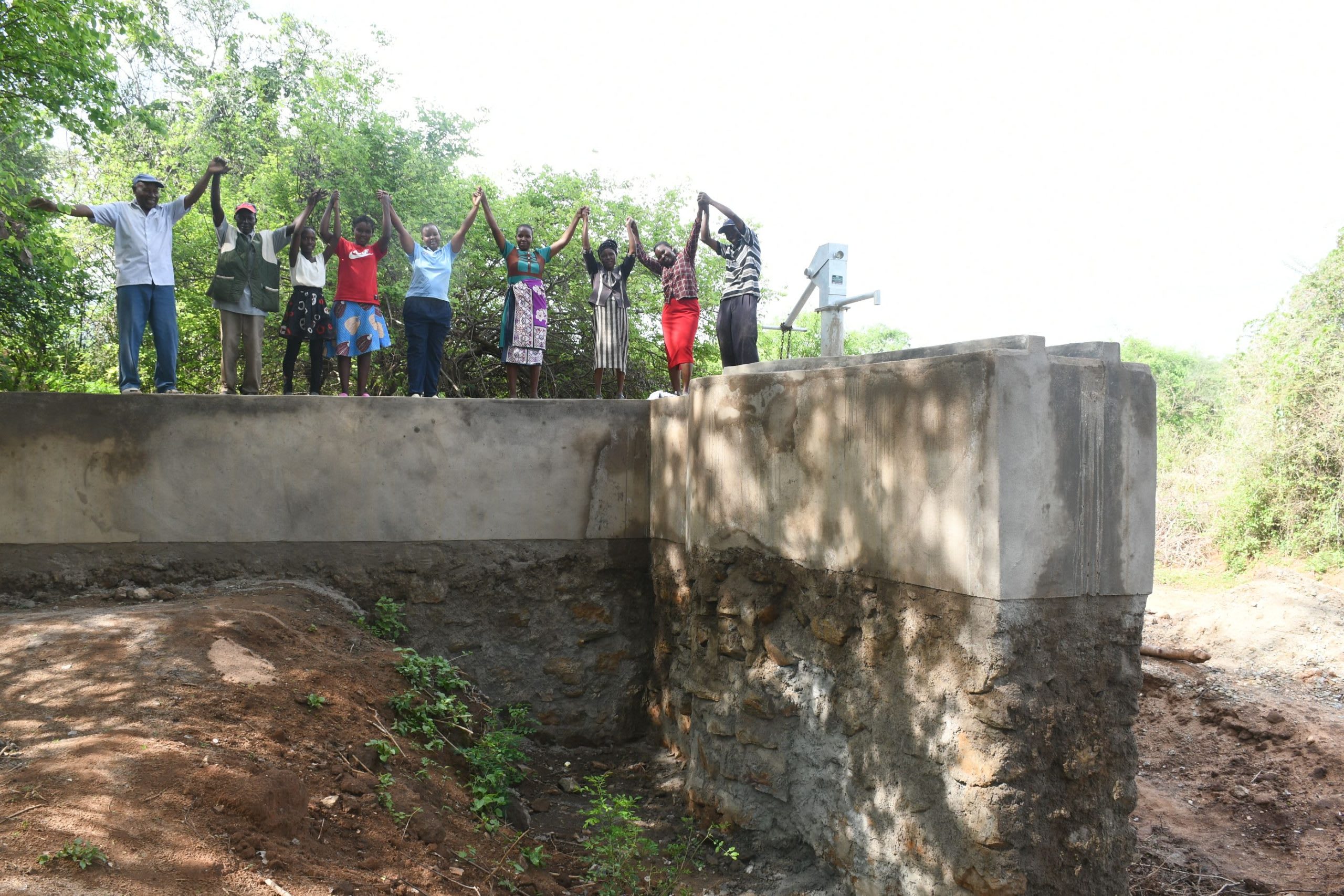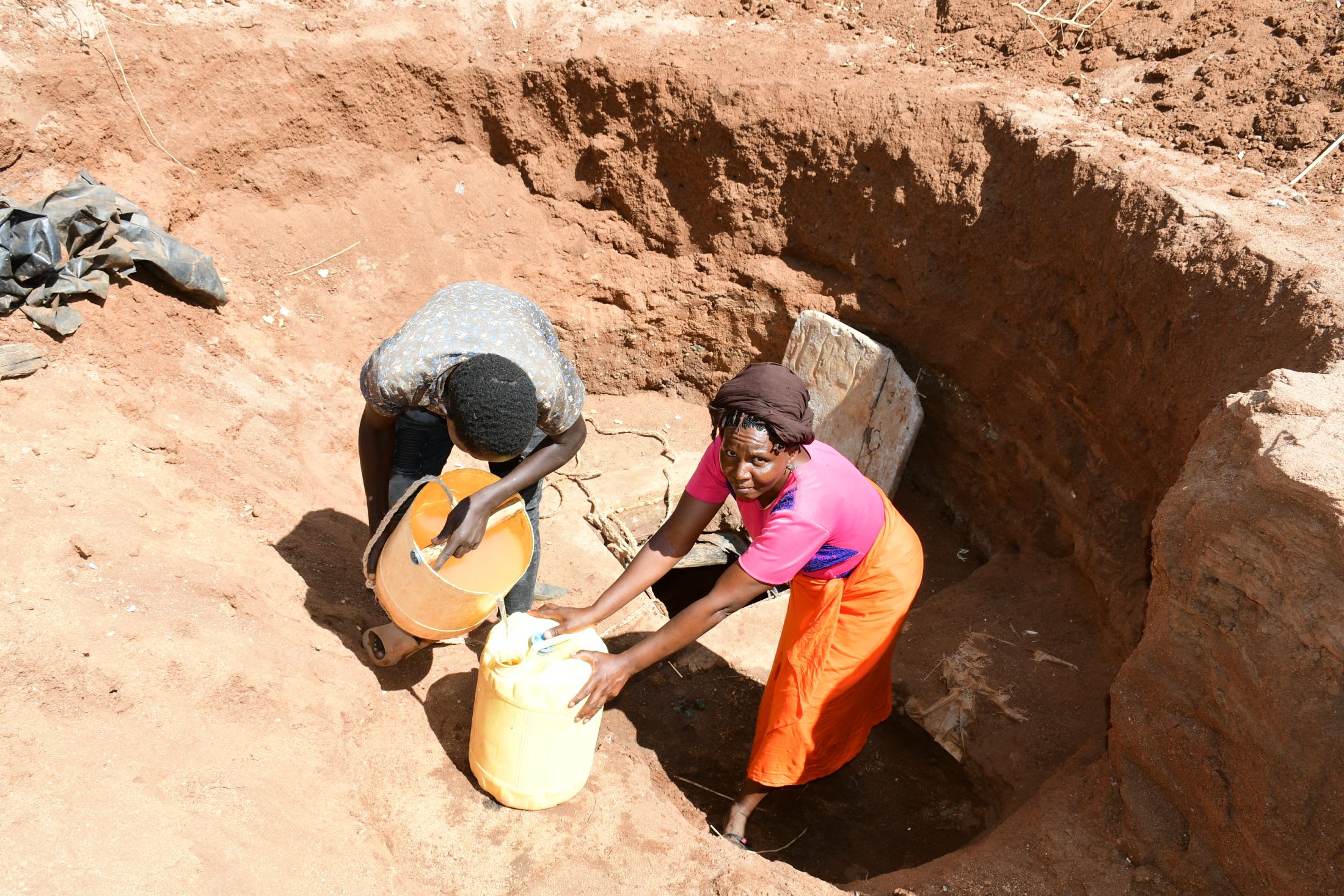The Ndakoni Community has a large population of 3,000 residents. Each and every one of them relies on a single scoop hole. Living in a semi-arid region means they experience extreme drought, so much so that their one water source experiences seasonality. They have lived through this hardship for ten years.

The community at the scoop hole.
"The rocky and hilly terrain in Ndakoni village can certainly make collecting water more challenging. The uneven terrain makes it physically challenging to transport water back to the village because the seasonal scoop hole is located at the bottom [of the] hill," said Field Officer Alex Koech.
Making the trek to the scoop hole adds fuel to the fire of this community's water crisis. Some are not able to make the journey, and those who can inevitably use up all their time trying to collect water. This gets in the way of their livelihoods, caring for their families, or their education.
16-year-old Patrick has lived with this water crisis for most of his life.

Patrick.
"I feel bad that there is no water at the waterpoint due to rampant drought in our area. I feel bad because I have to walk several kilometers under the scorching sun to draw water," he shared.

Patrick doesn't just worry about the distance but also what he may encounter on the way to the scoop hole.
"Walking to the river point is risky due to poisonous snakes on the way," he continued.
Not only is he likely to encounter snakes, but the water he works so hard to collect is contaminated.
"Scoop holes easily become contaminated with pathogens, including bacteria, viruses, and parasites from animal waste, runoff, and human activity. This has led to gastrointestinal illnesses. Frequent illnesses due to contaminated water have led to malnutrition, as individuals are unable to absorb nutrients effectively and lose their appetite when ill. Ongoing health issues have led to higher medical expenses for families and strained local healthcare resources," shared Field Officer Alex Koech.
Installing a protected dug well will give Patrick access to clean water that won't steal his time or his health. Instead, he can use that time to study or enjoy his childhood.

Patrick.
"I would spend my time playing football with my friends or studying," Patrick concluded.
Solving the water crisis in this community will require a multifaceted system that will work together to create a sustainable water source that will serve this community for years to come.
Note: Our proposed water point can only serve 300 people per day. We are working with the community to identify other water solutions that will ensure everyone has access to safe and reliable drinking water.
Steps Toward a Solution
Our technical experts worked with the local community to identify the most effective solution to their water crisis. Together, they decided to construct a dug well and sand dam.
Dug Well Near A Sand Dam
Once a sand dam is installed and has time to mature by gathering sand and silt, groundwater increases significantly in the entire area surrounding the project. This provides a reliable source of groundwater that wasn’t possible before. As a result, wells can be constructed to take advantage of the water stored and filtered in the collected sand.
During construction, we build a platform for the well and attach a hand pump. The community gains a safe, enclosed water source capable of providing approximately five gallons of water per minute.
This dug-well will be connected to a sand dam to obtain water.
Community Education & Ownership
Hygiene and sanitation training are integral to our water projects. Training is tailored to each community's specific needs and includes key topics such as proper water handling, improved hygiene practices, disease transmission prevention, and care of the new water point. Safe water and improved hygiene habits foster a healthier future for everyone in the community. Encouraged and supported by the guidance of our team, a water user committee representative of the community's diverse members assumes responsibility for maintaining the water point, often gathering fees to ensure its upkeep.

 Protected Dug Well
Protected Dug Well
 Rehabilitation Project
Rehabilitation Project













